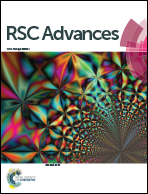Mold resistance of bamboo after laccase-catalyzed attachment of thymol and proposed mechanism of attachment
Abstract
Laccase-catalyzed attachment of functional molecules onto the surface of bamboo represents an alternative, green approach to improve performance. Although treatment of bamboo with thymol improved resistance to mold, using laccase to fix the same concentration of thymol to the surface of the bamboo could increase both the antifungal activity and resistance to leaching. Leaching of thymol was reduced by as much as 48.4% when laccase was used in thymol fixation. To make clear the mechanisms of fixation, reaction of thymol catalyzed with laccase, was investigated using Fourier-transform infrared spectroscopy, 1H-NMR, high-resolution mass spectrometry and thermogravimetric analysis, respectively. Results show that thymol oligomer (L-thymol) was formed with ether linkages, which resist water leaching. Although further confirmatory studies are needed, it seems that ether linkages were the main connection of thymol to lignin. This study demonstrates that laccase catalysis is a promising strategy to functionalize the surface of bamboo in order to bestow new properties suitable for a wide range of applications.



 Please wait while we load your content...
Please wait while we load your content...